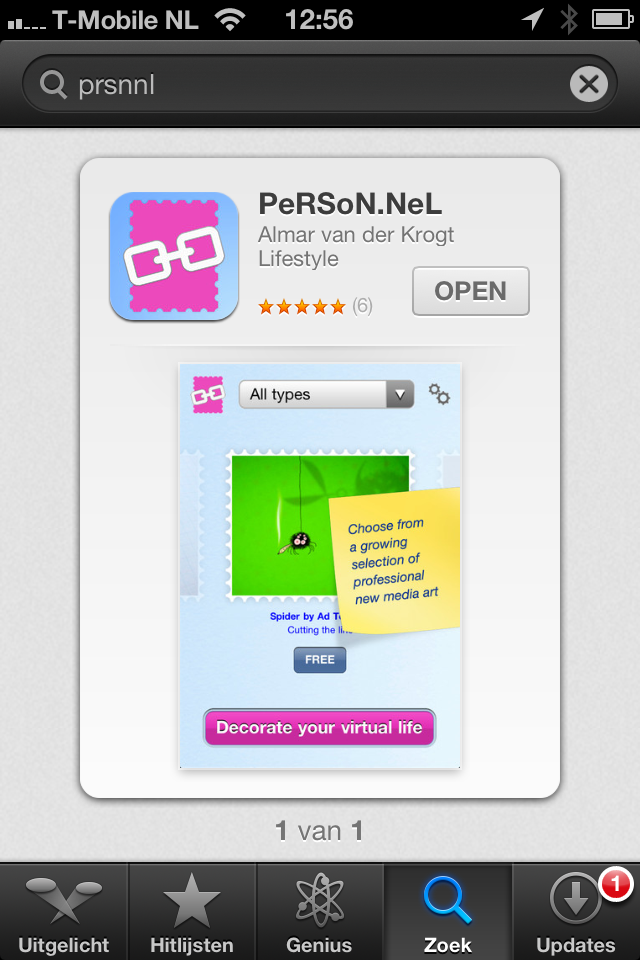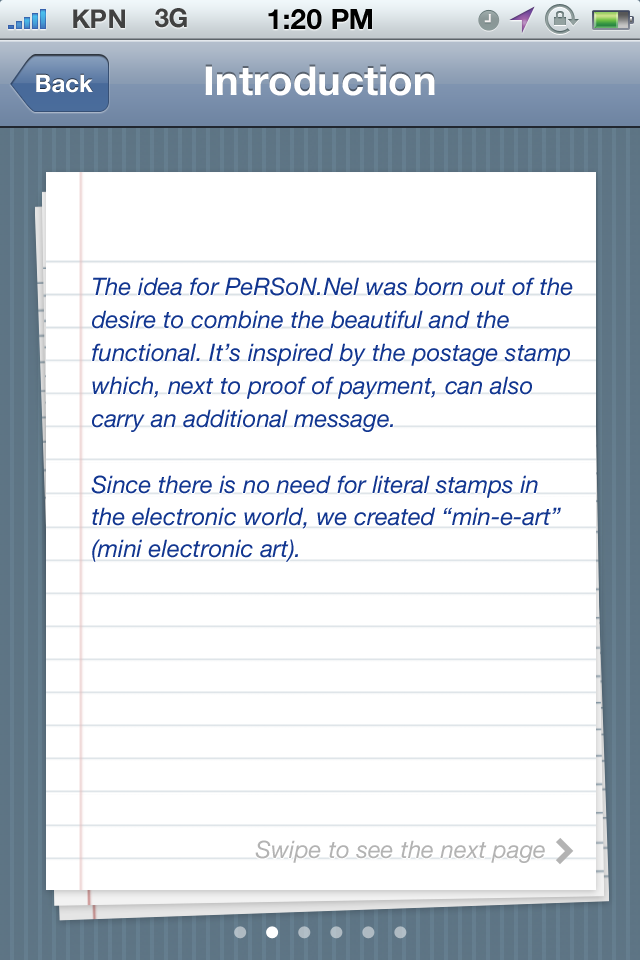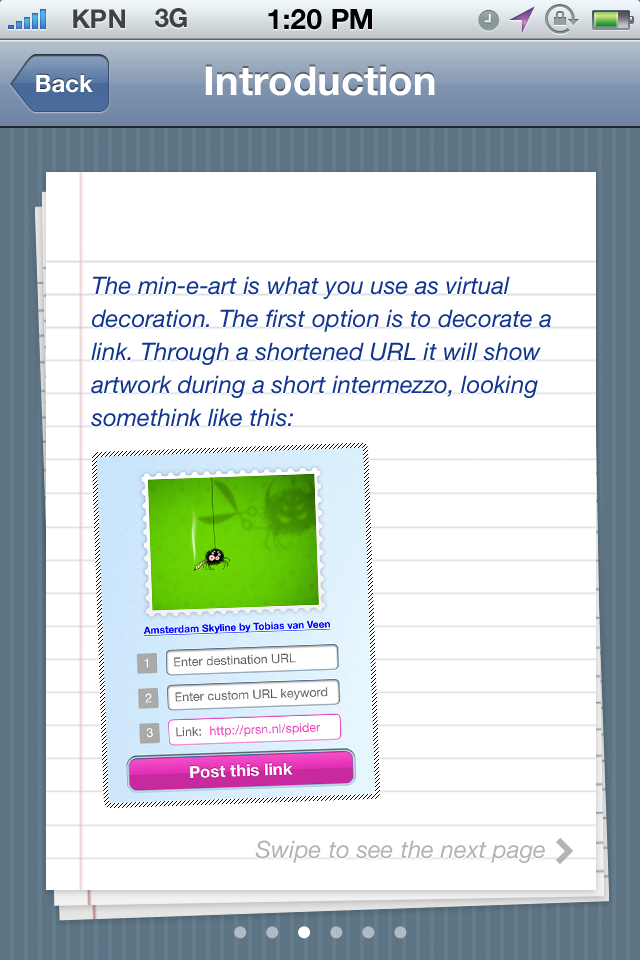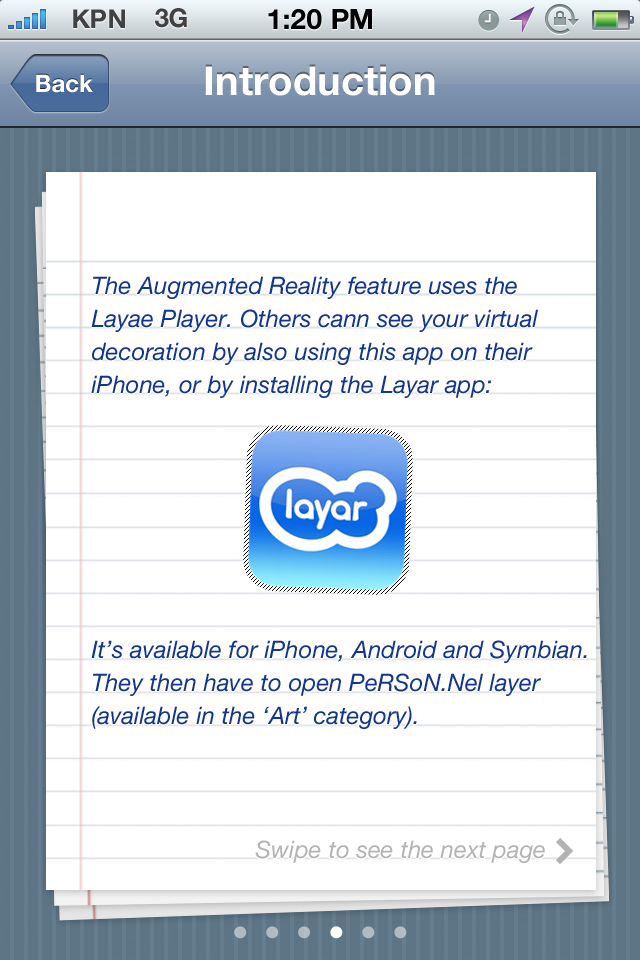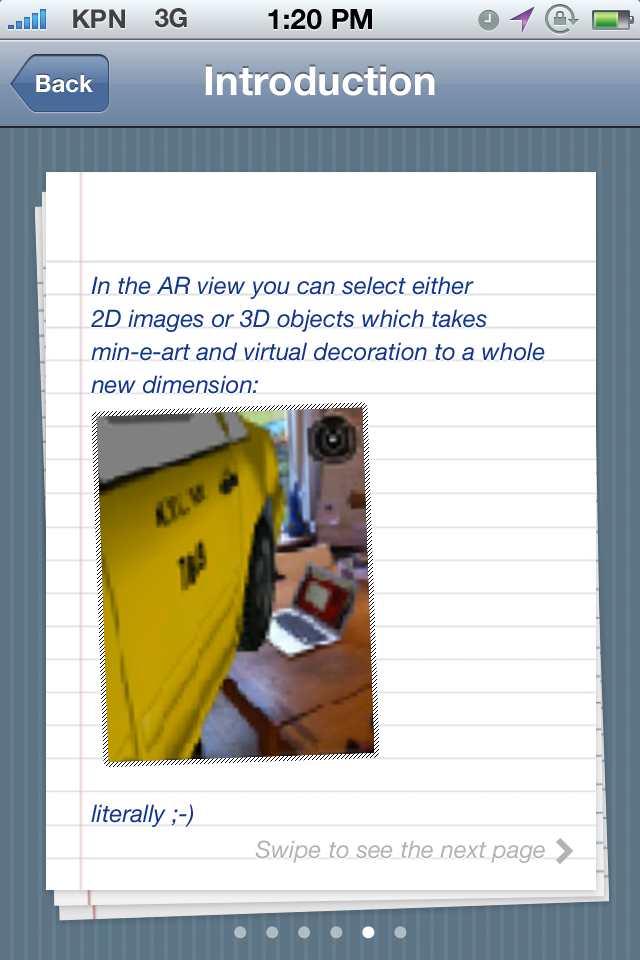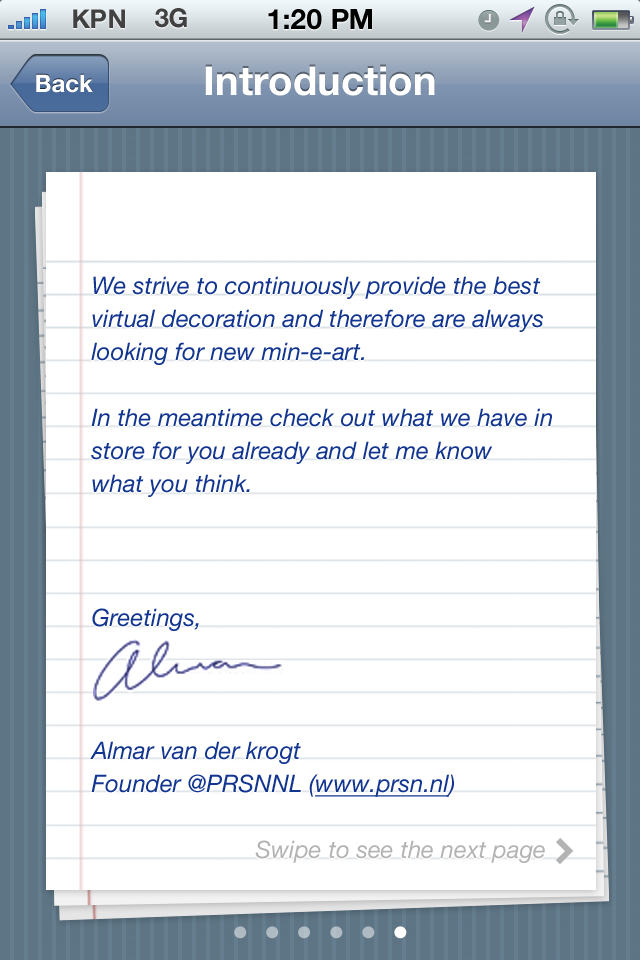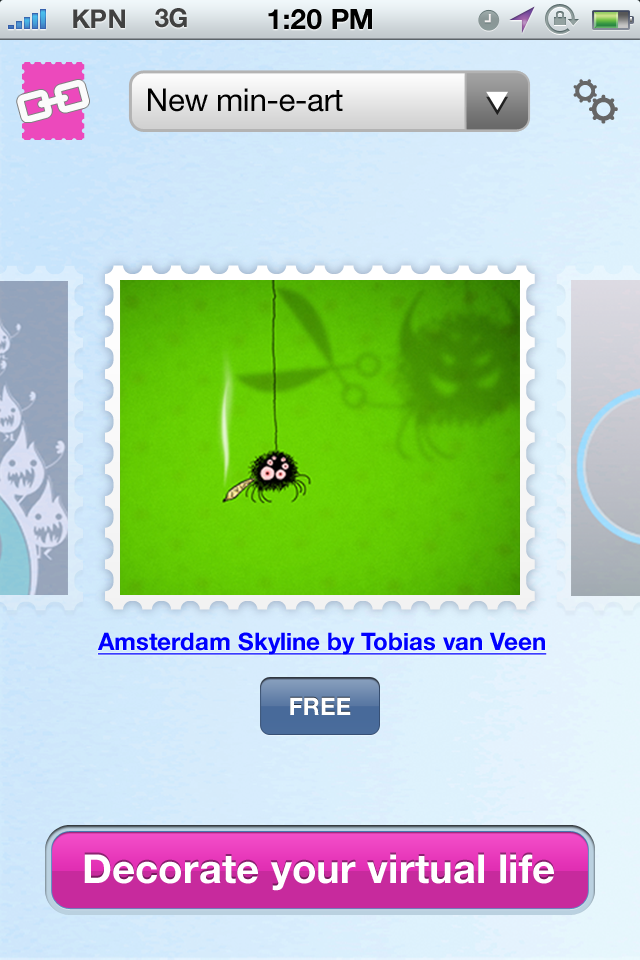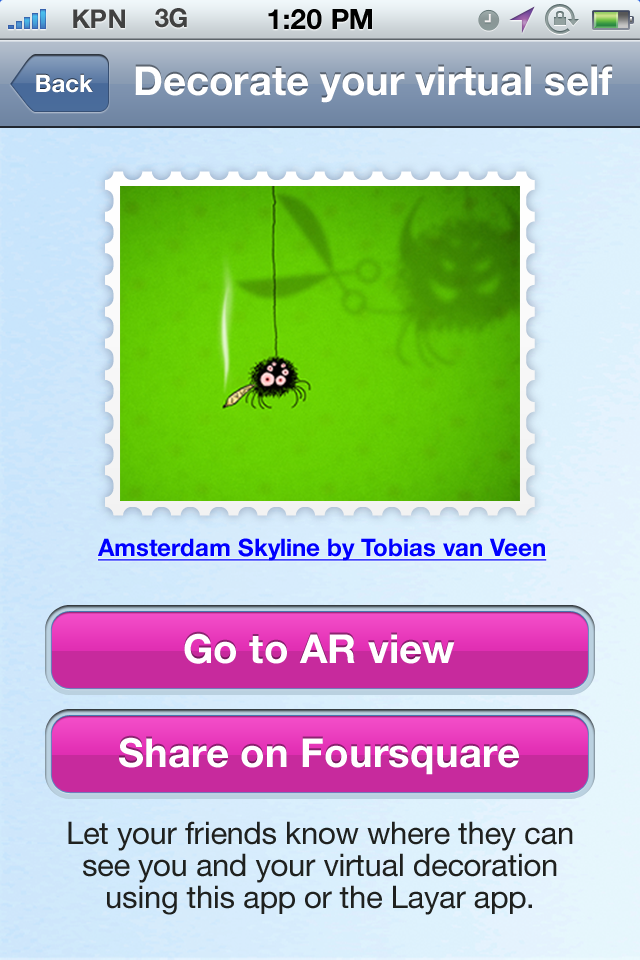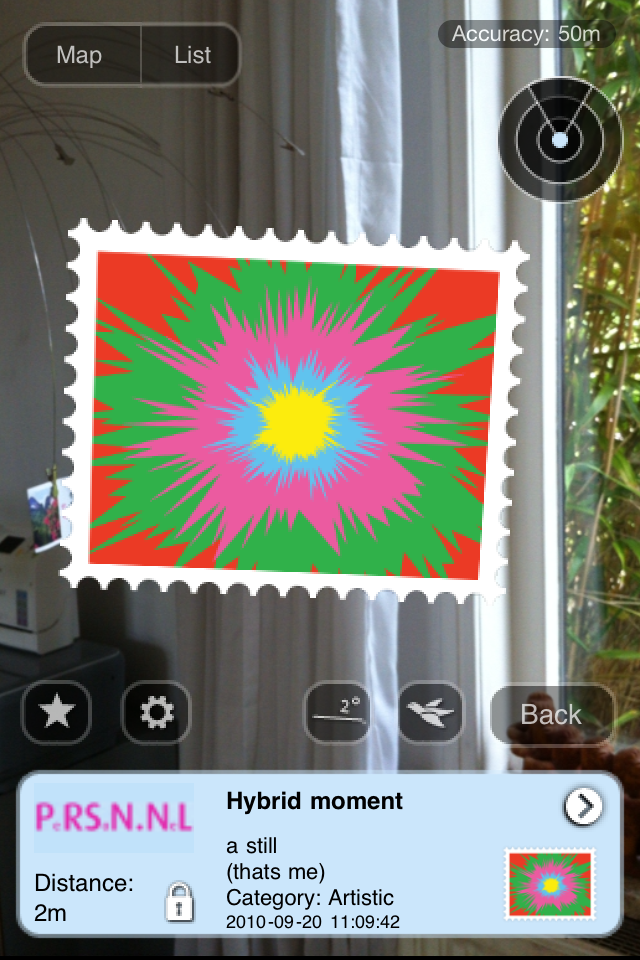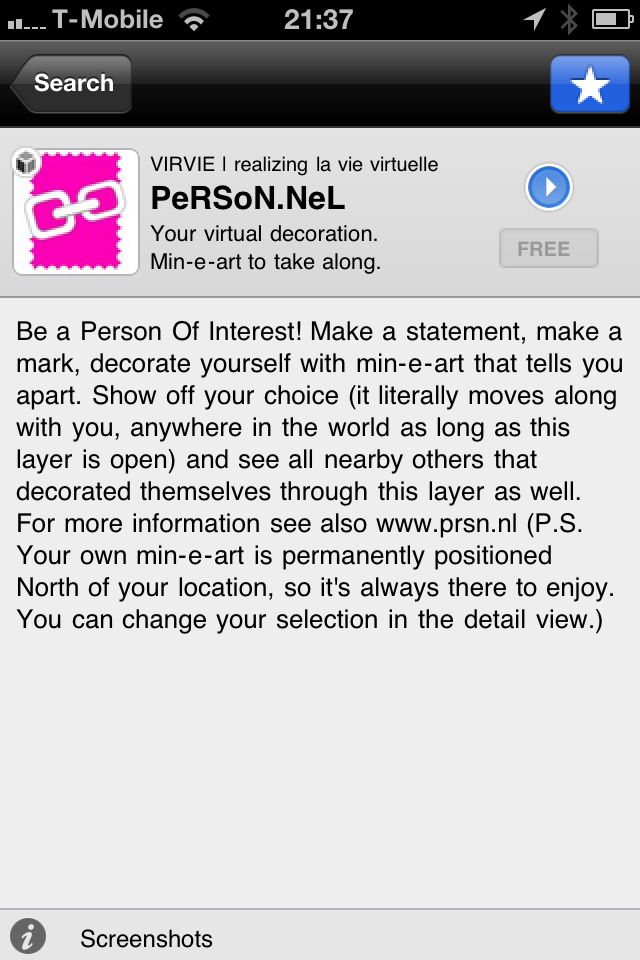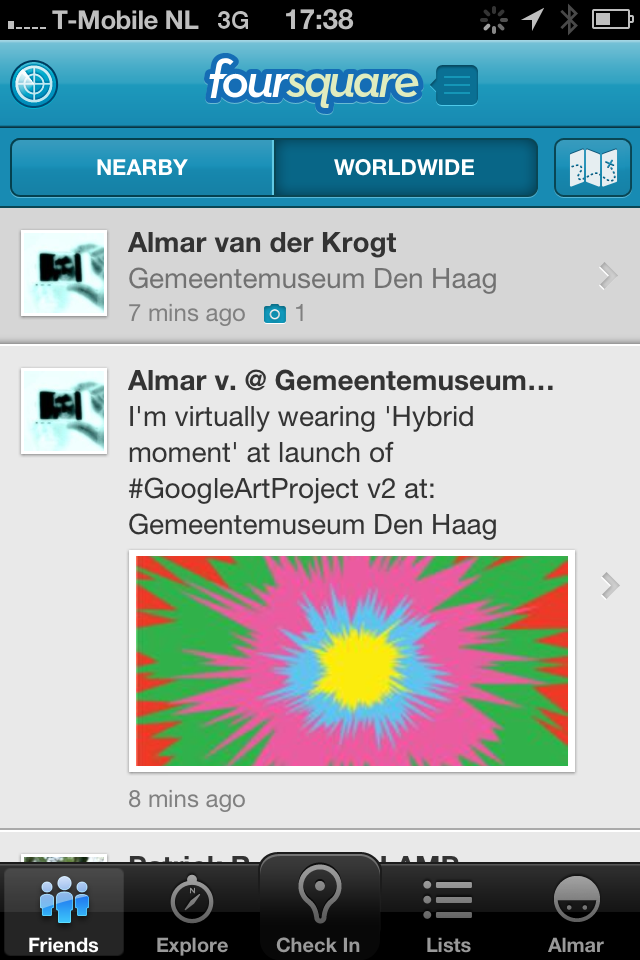In May 2008, I presented at “The Web and Beyond - Mobility” conference in Amsterdam – thanks once again @Peter Boersma – with a talk named ‘Party at My Place’ 🕺💃. The premise was a vision, dream, desire that websites would evolve into virtual gathering grounds. You can see the original talk 🎤and slides 📝 at the respective links or the embed below.
a vision, dream, desire that websites would evolve into virtual gathering grounds
Now, more than 12 years later, it seems – partly due to some unforeseen 🦠 circumstances – that my dream is becoming reality, and also has a name: #VirtualSocialPresence (as coined by – who else – @Chris Messina).
There has been a range of mobile and web applications rolling out in recent months that indeed allow you to virtually gather and socialize as you would in real life with added digital benefits of interactive elements, backdrops, superimposed personalizations and the potential of becoming a true virtual homestead (of course keeping in mind the obvious drawbacks of the lack of physical/tactile interaction – we are not there yet).
virtually gather and socialize as you would in real life with added digital benefits of interactive elements, backdrops, superimposed personalizations and the potential of becoming a true virtual homestead
Here I’ll be discussing the different applications that I encountered and what I hope it will evolve into, including the 9 key elements for a true #virtualsocialpresence.
Virtual Hang Out Apps
Driven by the global pandemic and the consequential shelter in place/work from home (#WFH) necessity, a number of pre-existing apps that allow you to do an activity – like watching a 📺 TV-show – virtually together with your friends, gained traction. To name a few: Squad (since acquired by Twitter), Houseparty and Rave.
Slightly different, but all the more relevant, is Twitch. Especially in combination with (watching) eSports 🎮 it gained even more popularity (see also Forbes: Some Of The Biggest Names In Sports Are Taking To Twitch During Coronavirus Lockdown).
All these apps focus on allowing you to virtually gather as a group and ‘hang out’, replicating as many of the regular interactions among a group of friends as possible, but not necessarily augmenting the experience.
Virtual Work Environments
A similar thing happened for work-related gatherings. Videoconferencing went mainstream with the likes of Zoom and Teams. Pre-existing workspace sharing apps like Miro and Mural replaced whiteboard-meetings and ‘brown paper’-sessions. Going beyond these ‘screen sharing’ 📌 apps, and focusing more on the personal interaction are examples like mmhmm, With and MakeSpace (work in progress). A key feature in With and MakeSpace is ‘spatial audio’ where you listen into👂conversations by moving closer, similar to what would happen in an open plan office space.
We all suffer from screen-fatigue by now, but in the words of @Kile Ozier it is A Fortunate Confluence…of Unfortunate Events; “For so many for so long – especially in particular demographics, screens have been held and characterized as soulless and obstructive; virtual barriers to personal contact, impersonal sappers of energy and life. I think, though, that this has begun to subtly transform from screens being perceived as impediments to being treated as the portals they are; exponentially accelerated at this moment of crisis.”
“The barrier has gone; the people are the experience. Screens perceived as hard barrier is set to evolve into them being embraced as the windows of opportunity that they are.” – Kile Ozier
@Raph D’Amico explores this further in an extensive thread (see below) and states “What the Great Unbundling of Presence means is that instead of trying to replicate the full experience of being together, we're going to end up with tools that let us encounter each other in radically different ways. Sometimes just a subset—perhaps super-humanly amplified ...or rich & full embodiments that are *different* than IRL, and emphasize different abilities & needs for connection. The Zoom grid is the faster horse. The next thing is going to be *many* next things, because no single solution will fit every need.”
Virtual Celebrations and Exhibitions
Getting closer to what I imagined in 2008 are the virtual celebrations 🎉 – e.g. for graduation or a religious ceremony – that started taking place in for example the game Animal Crossing. As well as the dedicated exhibitions (e.g. art displays 🖼 ) in metaverses like Decentraland and Cryptovoxels.
What makes these virtual events special are the fact that these environments are build or decorated for the occasion and people also dress (their avatar 👩🎤🦸🏿🐼🧝♀️) for the occasion; all getting closer to an actual party.
Still, there is room for improvement. As I stated back in 2008; “I want my friends to come over to my place [i.e. my webpresence], to join me in the way I live and to show off my stuff.”
Virtual Personality Extension… (through 9 key elements)
Even after we conquer the pandemic 💉 there are several good reasons – limiting ✈️ 🚗 travel to ease the burden on the planet 🌍 for one – to keep the good elements of living part of our lives online. But instead of ‘making the best of it’ we should strive to make it the best.
Keep the good elements of living part of our lives online
So the updated version of my vision, dream, desire for a #virtualsocialpresence, fit for a virtually real gathering, has all of the above mentioned innovations and some additional elements to make it more personal, as in personality, and augmented real.
@Greg Isenberg lists a number of elements for a next generation social network, that align with this:
Has "opening hours:" app changes based on time of day (ie: HQTrivia)
Pseudonymous
Elements of surprise
Status and reputation even more important
Come for tool, stay for vertical network
I would add;
Decentralized: it’s your place, on your terms (e.g. Mastodon)
Augmented: it’s reality plus the benefits of virtualization (e.g. Snapchat Lenses, Instagram AR filters)
Containing real estate: your webpresence – as in the domain or handle – has an actual value or elements of value in it (e.g. NFT’s)
Let’s go over these 9 key elements in a little more detail in the next paragraphs.
1. Group-first; inside vs. outside
It starts with you and whoever you decide to interact with, i.e. ‘let in the door’🚪. That interaction is private, in principle, but can be public if so desired by the group. So there is more going on inside (for the ‘insiders’, the intimate contacts) than outside, but there definitely is an outside, a facade 🏛 (in every meaning of the word 🎭).
So, of course, on every level you might portray a better – a more realistic? – version of yourself and those are the bits and pieces you broadcast, but depending on the inner circle(s) you and the group establish, that’s what they get to see. So you get a more fluid transition between your public and private online/social presence (see element 3 as well).
2. Opening hours; when is the party starting
Almost all human interaction is planned, or at least prepared; you dress before you leave your house or close the door or curtains to delay interaction with unexpected visitors. And for special events you take extra measures, do special preparations. Finally, to be actually present you have to schedule 🗓 the time that you can be present. Outside this time slot there can be other forms of engagement (e.g. via a 🤖 chatbot, like the one I made for myself on Messenger), but not at the same, personal, level.
3. Pseudonymous; being the friend of a friend
When planning a party you might think: ‘the more, the merrier’. But to a certain extent of course; you try to avoid unwanted guests. Also, when going to a party, you want to know who you will know. To solve both, there is the ‘mutual friend’; the person that can introduce you to the new group or can introduce others to your party.
Of course, there’s nothing new here. But maybe a #virtualsocialpresence allows for a more nuanced and gradual scale between levels of trust; going from stranger (under a pseudonym), to friend-of-a-friend – maybe with a moniker – to a relation on ‘first name’ or even a verified (see Recognizing unique individuals) real name basis.
4. Element of Surprise; the sneak preview
The experience of a real(ly) good party usually spills over into the public space: extra cars/bikes/scooters parked around the venue, the waiting line in front of the entrance, the music/conversation/laughter seeping through, flashes of people having a good time 💃🕺!
Through selfies and #hashtags this is shared online already, so outsiders know something of what is going on inside, but for a #virtualsocialpresence we need a little bit more, I think. We can already eavesdrop👂, or ‘listen in’, on gatherings in apps like Clubhouse (if you are invited to the platform in the first place), but that’s almost the whole experience; there’s no surprise factor in being able to join the discussion. There should be that ‘you had to be there’ factor.
Maybe the the “Proof of Attendance Protocol” can play a role here, but more on that in element 9 (below).
5. Status and Reputation: showing off
Status symbols are of all ages, so definitely also the Virtual Age. And where status and reputation on (online) forums are usually linked to contribution to and credibility within a specific community, what I’m looking for here is the more universal – or banal – kind: bling 💍 and exuberance 🤑.
The most explicit, and excessive, example of a status symbol in the virtual space is Cryptopunks. They are an example of Non-Fungible Tokens #NFT, which is an asset on a blockchain, which is techno-babble for a limited edition pixel-art character, currently valued at a minimum of $150.000,-! 😳
A slightly more down to earth/traditional example is the collecting and trading of digital art 🖼 and (sports) memorabilia, again in the form of NFT’s.
You can show off your possessions in virtual galleries or for example The Rainbow 🌈 Ethereum Wallet App, which let’s you view the collectibles on a certain address 👉.
You can argue about the inherent value of a digital image (see @Coldie’s response below), but ideally your #virtualsocialpresence should have a background canvas for all your online encounters. It then can be adapted, depending on the type of encounter (e.g. business or pleasure) and the kind of impression you want to make.
6. Tool and social network; let’s mingle
The premise of Greg Isenberg’s mention of the tool vs. the network, is the idea that each (new) social network usually has a unique feature that draws in the crowds. The newness then wears off – or is copied profusely – but people stay for the community that has formed regardless of the feature.
In the virtual party analogy this is no different; the venue makes the party 🎉. Specifically, you would want the equivalent of seats and tables in the form of spaces/rooms for your guests, so they can mingle in subgroups. The before mentioned tools like With and MakeSpace already provide features like this.
So, to host your own party you need to select the best platform for your needs; that is the social experience you desire to create for yourself and your guests.
7. Decentralized; a place to call your own
An important distinction in all this is that the whole experience takes place at your (virtual) place. So not an account on platform X (which than controls/owns whatever takes place), but an instance of X, or Y or Z on your own server, chain or site.
Examples of platforms/social networks that allow you to create your own instance or at least let you own your own content are Mastodon, Cent, and LBRY.
Ideally the platforms are all interoperable, so my choice for decorating myself (see element 8) and my virtual place doesn’t prevent me from visiting yours and vice versa.
8. Augmented; dress for the occasion
In 2010 I made an attempt at an AR app using the first version of @Dutchcowboy’s (with others) Layar. The idea was to be able to ‘virtually decorate yourself’. Called PeRSoN.NeL, you could attach images to your location, which were visible as an overlay in the camera view of the App. In the animation you can see how it worked in theory, and in the image carrousel what it looked like in practice.
The technology since then has come a long way, see for example the aforementioned Snapchat Lenses (that even come with AR glasses 😎!) and Instagram AR filters.
A whole new dimension of personal expression
These tools now make it possible to truly augment your virtual presence; be it in online meetings or actually out on the street. Vogue Business refers to it as Digital Only Beauty (referencing work by @inesalpha, also see below), but given the examples below, I think it goes well beyond beautification and turns into a whole new dimension of personal expression.
The RTFKT example also ties in the status symbols in the form of NFT’s as mentioned in element 5 and which I will revisit in element 9 below. @RTFKT Studios is ahead of the curve but – in their own words; “The RTFKT project was scheduled to take off in 2040, but the human development in consciousness has accelerated faster than anticipated.” 🧐
And finally @Gambit takes it full circle with ‘wearable NFT’ the “Ethereum Block Chain”:
9. Real Estate; prized possessions and gifts
As should be clear by now, I’d love to be able to invite people over to my virtual place, interact with them, have a unique experience and make a lasting impression.
When you would enter you would see something like this:
Virtual NFT/Netart background (N.b. The animated GIF makes the animations faster then normal)
A background featuring a photo of a past vacation and some of my prized digital possessions:
@Bård Ionson’s “Artificial Entity Probes” (the Present Place layer)
@Leo Zeba’s “Latent News”
@Frank Ape’s “Frank’s Papaya” (the TV layer)
Am I showing off here? Yes. But only to prove a point 😉.
We could discuss the art, the same way we would discuss the art on the walls of my home, or the plants 🪴 in my garden for that matter. It goes way beyond the header image on a social network profile page, not to mention the potential of personal (AR) filters, as mentioned in element 8, in the form of NFT’s (see the @LateFX example on Filta below) .
Our respective Augmented Reality NFT’s could turn the whole thing into a postmodern Bal Masqué 🎭!
And actually that NFT could be the access key 🔑 to the party. As pointed out by @David Skilling the sale (or distribution) of a limited edition NFT gives the holder exclusive access.
An early example is Stoner Cats 🐾 by Mila Kunis and Ashton Kutcher, where owning one of the NFT cats 🐱, gives you access to the animated series.
Or the NFT becomes a gift/goodie bag 🎁, when you leave the party. See for example the SuperRare Collector Badge using the “Proof of Attendance Protocol” 👉.
It’s the unique souvenir from a memorable event.
In conclusion
To me it seems all the elements for a true #virtualsocialpresence are here, they just haven’t been combined yet. So what does it take to 🙌 ‘get this party started’ 🙌 ?
And even though I see #virtualsocialpresence as an inherently personal matter, I do think there is a business side to it; after all we don’t all build👷♀️– or even buy – our own houses either. So a commercial provider that sets up your virtual presence and provides basic amenities is logical, but the line of privacy and (data) ownership will be drawn way more clearly and absolutely than it is right now. So what is yours, stays yours, and if you move, it moves with you (within the realm of technical possibilities).
The line of privacy and (data) ownership will be drawn way more clearly and absolutely than it is right now.
Also, the creativity, versatility and promise of NFT’s can not be overstated. In my opinion they are the catalyst of many more things to come, or in the words of @Josh Ong:
Party on 🥳!



